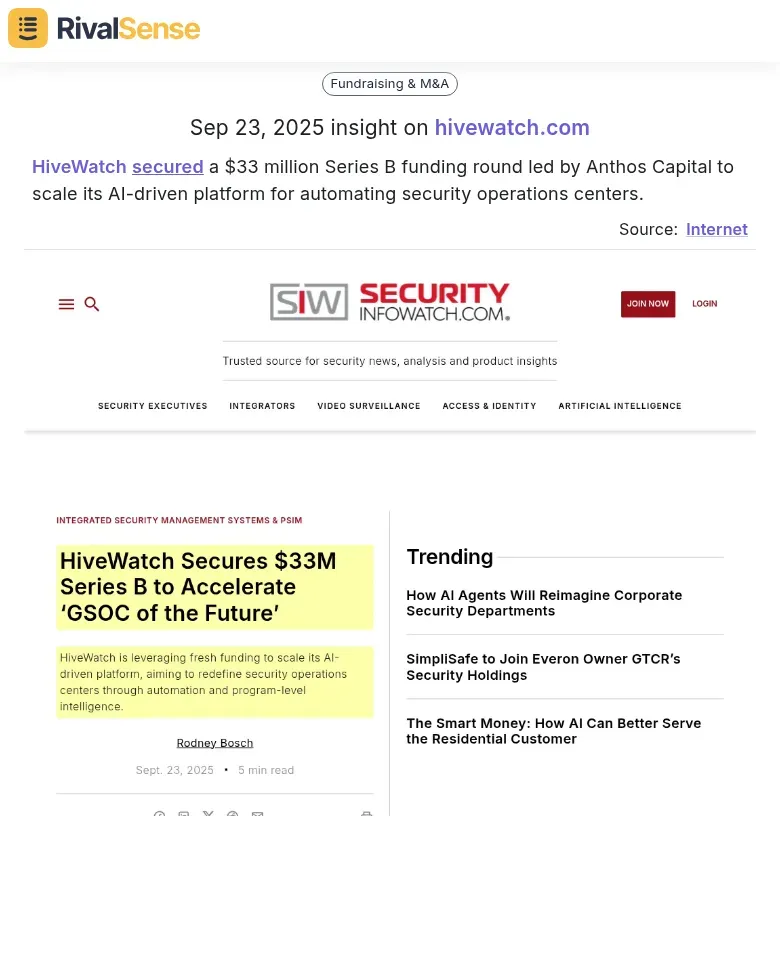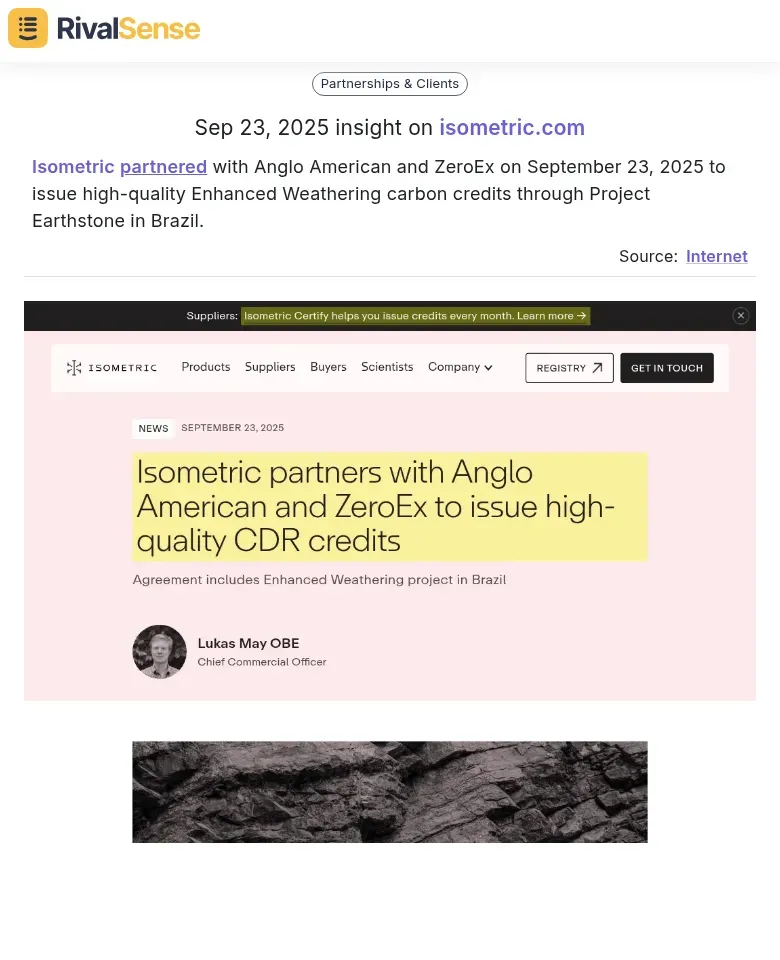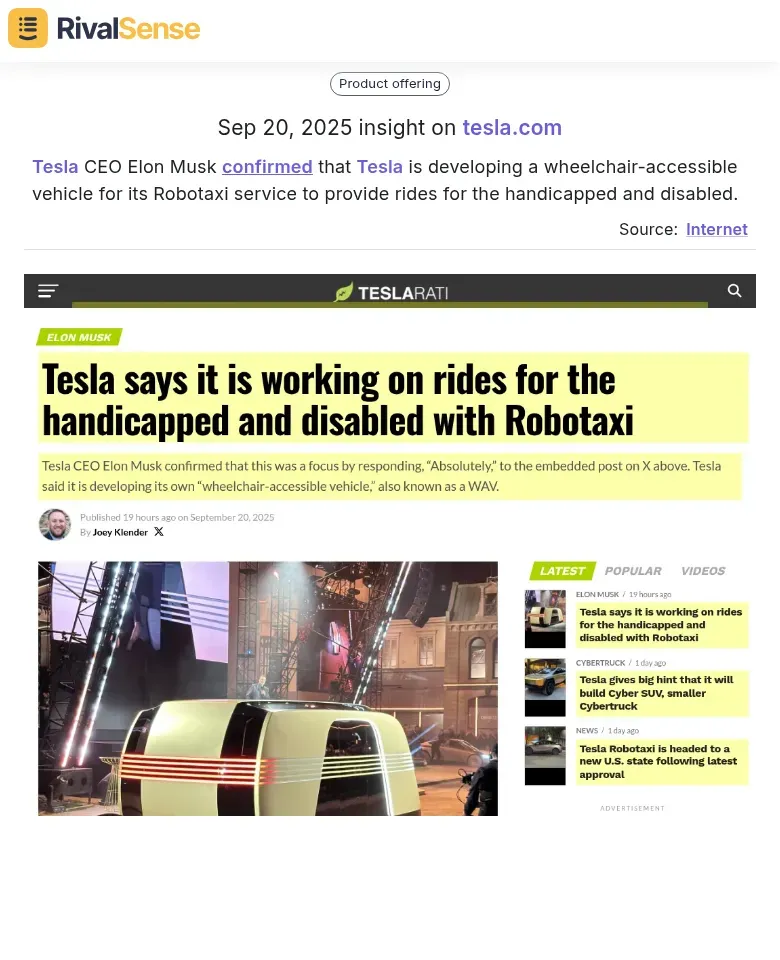Advanced API Tactics for Key Account Competitor Intelligence
In today's fast-paced B2B environment, key account management requires more than just reactive strategies. API-driven competitor intelligence empowers businesses to proactively track rivals' moves, turning data into actionable insights for sustained growth. By leveraging APIs to monitor public data like pricing changes, feature updates, and partnership announcements in real time, you can identify market gaps early and capitalize on opportunities.
Practical steps to get started include:
- 🔍 Set up API integrations with sources such as social media, news feeds, and product review sites to automate data collection.
- ⚠️ Use automated alerts to flag significant competitor movements, like discontinuations or new launches.
- 📊 Analyze data trends to uncover partnership opportunities or areas where your solution can fill voids for key accounts.
For example, if a competitor discontinues a service, you can swiftly position your offering to meet client needs. Regularly review these insights with your account teams to tailor strategies and boost loyalty.
Learning from Funding and AI Integration: The HiveWatch Case Study
Tracking competitor funding rounds provides deep insights into their strategic priorities and future scalability plans. For instance, monitoring announcements can reveal investments in AI or expansion efforts that might shift market dynamics. This type of intelligence is valuable because it helps you anticipate competitors' growth trajectories and adjust your own strategies accordingly.
Consider HiveWatch's recent funding round as an example:

HiveWatch secured a $33 million Series B funding round led by Anthos Capital to scale its AI-driven platform for automating security operations centers.
This insight highlights how funding can signal a shift towards scaling AI capabilities. Practical tips:
- 📰 Monitor funding announcements for keywords like "AI integration" or "scale" to gauge technology adoption.
- ✅ Checklist for action: Regularly review press releases, set up alerts for funding news, and analyze how AI trends might impact your industry.
By proactively tracking such moves, you can stay ahead of trends like increased automation in security operations.
Partnership and Ecosystem Insights: Lessons from Isometric's Collaborations
Partnerships are powerful indicators of competitor strategy, often revealing market entry plans or innovation focuses. By analyzing alliance announcements, you can predict shifts in revenue streams or target markets. This intelligence is crucial for anticipating competitor pivots and strengthening your own ecosystem.
Here's a real-world example from Isometric:

Isometric partnered with Anglo American and ZeroEx on September 23, 2025 to issue high-quality Enhanced Weathering carbon credits through Project Earthstone in Brazil.
This partnership insight shows how collaborations can signal expansion into new areas like sustainability. To leverage this:
- 🔔 Set up monitoring via press releases, LinkedIn, or tools like Google Alerts with keywords like 'competitor name partnership'.
- 📋 Checklist for analysis: Identify key partners, assess alliance frequency, and benchmark against your partnerships.
Practical tip: Regularly check competitor 'Partners' pages and use RSS feeds for real-time updates to gain foresight into strategic shifts.
Product Development and Accessibility: Insights from Tesla's Robotaxi Initiative
Monitoring product launches and updates helps uncover unmet customer needs and differentiation tactics. For example, tracking features like accessibility can reveal how competitors are catering to underserved markets. This type of insight is valuable for identifying gaps in your own offerings and emulating successful strategies.
Take Tesla's recent announcement:

Tesla CEO Elon Musk confirmed that Tesla is developing a wheelchair-accessible vehicle for its Robotaxi service to provide rides for the handicapped and disabled.
This product update demonstrates a focus on inclusivity, which can be a key differentiator. Use API data to track such changes:
- 🌐 Leverage APIs from sources like automotive platforms to monitor software releases and feature updates.
- 🛠️ Practical steps: Review API changelogs, set alerts for documentation updates, and use tools to automate tracking.
By analyzing these moves, you can align your product development with emerging trends and avoid obsolescence.
Implementing Advanced API Tactics: A Step-by-Step Framework
To effectively implement API-driven competitor intelligence, a structured framework ensures consistency and actionable outcomes. Start by automating data collection and integrating cross-channel sources for a holistic view. This approach transforms raw data into strategic advantages for key accounts.
Follow this step-by-step guide:
- Set up automated API monitoring tools: Use services like Postman or custom scripts to track competitor endpoints (e.g., /api/v2/products for updates). Focus on version changes and new features.
- Integrate cross-channel data: Pull information from GitHub, developer portals, and social media using webhooks for real-time insights.
- Establish review cadences: Schedule weekly reviews for alerts and monthly deep dives to analyze trends. Assign insights to teams—e.g., if a competitor launches a new API, tailor your pitches.
📝 Checklist for setup: List key endpoints, prioritize high-impact accounts, and test alert systems. This turns data into growth strategies.
Measuring Impact and Future-Proofing Your Strategy
Measuring the ROI of your API-driven intelligence is essential for continuous improvement. Define KPIs like win rate improvements, cost savings from automation, and time-to-insight metrics to gauge effectiveness. Future-proofing involves leveraging AI enhancements to stay ahead of market shifts.
Key steps include:
- 📈 Set up a dashboard for real-time KPI tracking, such as deals won against monitored competitors.
- 🔄 Conduct quarterly reviews to adjust alert thresholds and reduce false positives.
- 🤖 Integrate AI tools for predictive analytics and sentiment analysis to spot trends early.
Emerging trends like real-time market simulations require staying updated on API innovations. Regularly test new endpoints and participate in beta programs.
Take Your Competitor Intelligence to the Next Level
Implementing these advanced API tactics can transform how you manage key accounts and outmaneuver competitors. For seamless, automated insights into competitor moves like funding, partnerships, and product updates, try RivalSense for free at https://rivalsense.co/. Get your first competitor report today and start turning data into decisive action!
📚 Read more
👉 Beginner's Guide to Printing Industry Competitive Benchmarking
👉 Competitor Media & Content Insights Checklist for Strategic Account Tracking
👉 How to Use Competitor Personnel Moves for Strategic Insights
👉 Key Account Tracking and Reporting: The Ultimate Guide for 2025
👉 Key Account Management vs Customer Success: 5 Common Mistakes Digital Marketing Agencies Make
